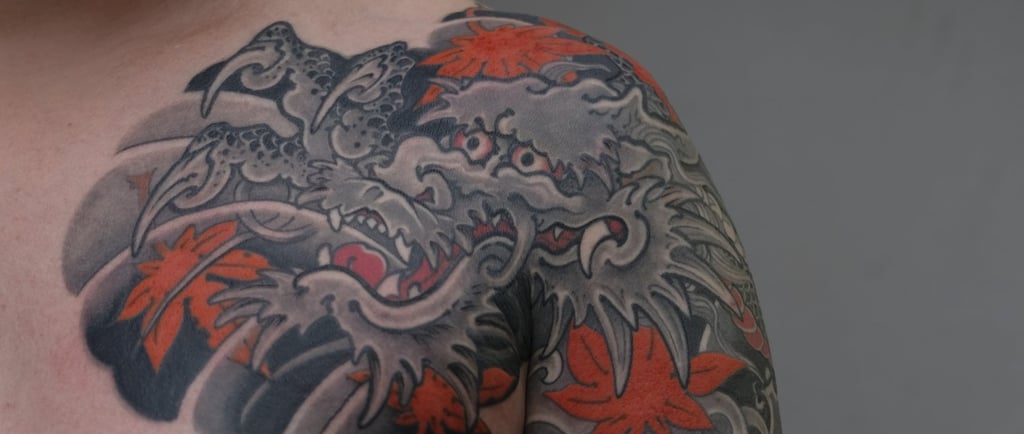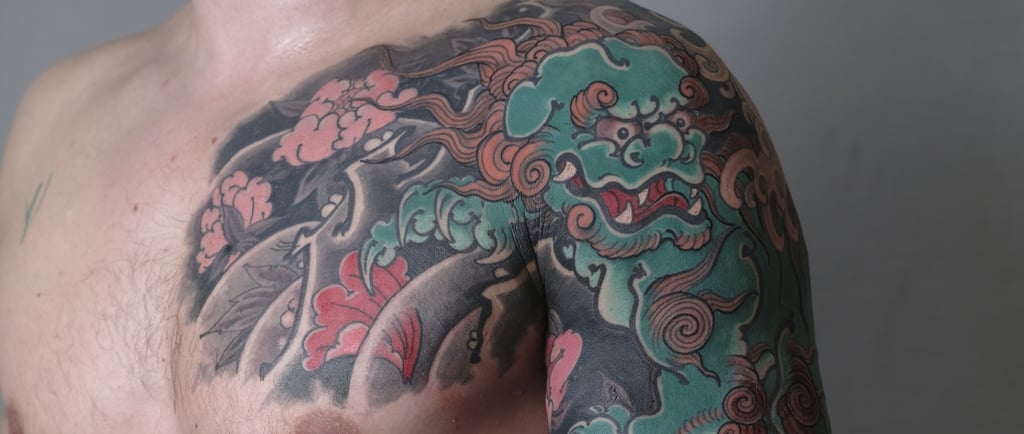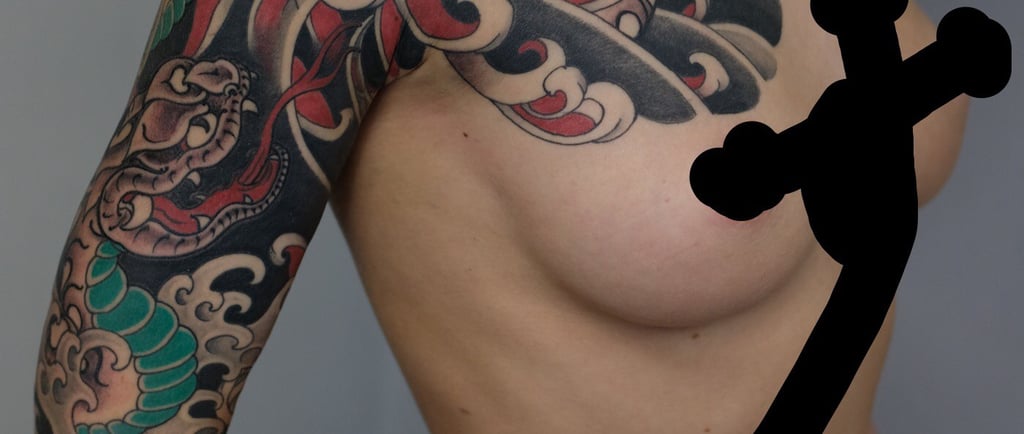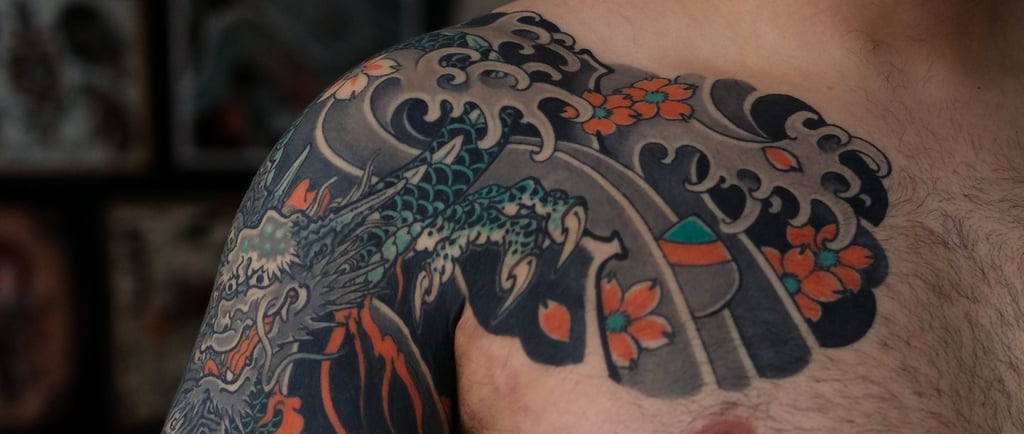Top 5 Japanese Tattoo Sleeves and Their Meanings
TATTOO MEANINGS
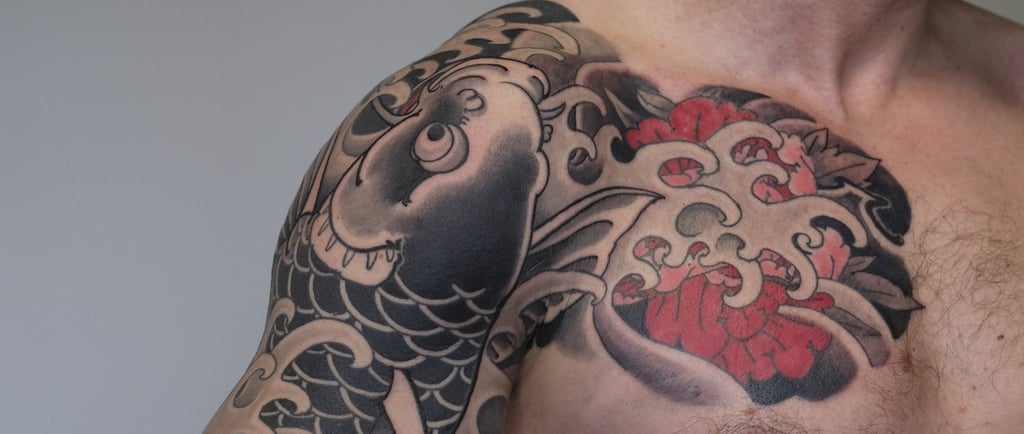

Koi Fish: Symbolism and Significance
The koi fish is a prominent symbol in Japanese culture, celebrated for its deep meanings tied to perseverance, strength, and transformation. In Japanese mythology, the koi fish is renowned for its arduous journey upstream against strong currents, representing the spirit of resilience and determination. This journey has led to numerous legends, such as the story where a koi successfully swims upstream and transforms into a dragon after overcoming the challenges it faced. This metamorphosis underscores the concept that through hard work and perseverance, individuals can achieve greatness.
Additionally, the koi fish is often linked to attributes such as bravery and success. It is not uncommon for individuals to choose koi fish tattoos to symbolize their own personal struggles and triumphs. These tattoos serve as a reminder of one's strength to face adversity and emerge victorious, making them a popular choice for those seeking to express their life stories through body art.
Aesthetically, koi fish tattoos are vibrant and eye-catching, typically characterized by a myriad of colors including red, orange, blue, and black. Each color carries its own symbolic significance, such as red for love and affection or black for strength and overcoming challenges. The way koi fish are often depicted in dynamic poses, swimming gracefully through waves or surrounded by water, adds to their visual appeal. These tattoos are frequently integrated with other elements, like cherry blossoms or lotus flowers, further enriching their meanings.
Ultimately, the appeal of koi fish tattoos lies not only in their beautiful representation but also in the profound significance they carry within Japanese culture and the personal meanings they embody for those who choose to wear them. In conclusion, the koi fish serves as a powerful symbol of perseverance and transformation, making it a favorite choice for tattoo enthusiasts worldwide.
Dragon: The Majestic Guardian
In Japanese culture, dragons hold a prominent place, representing majestic guardians imbued with deep symbolism. Unlike their Chinese counterparts that are often depicted with a more robust figure, Japanese dragons maintain a serpentine shape characterized by elongated, sinuous bodies. Typically, these dragons possess three claws—distinguishing features that set them apart from the four-clawed Chinese dragons. This unique morphology accentuates their otherworldly nature, embodying power, strength, and authority.
Japanese dragons are revered as symbols of protection, often seen as benevolent creatures who oversee water bodies, fertility, and agricultural prosperity. They are believed to bring good fortune and safeguard against evil forces. This protective aspect resonates deeply with individuals who choose dragon tattoos, as the imagery embodies not only a powerful guardian but also a personal talisman that shields the wearer throughout life’s journey.
Furthermore, dragons are synonymous with wisdom and enlightenment. Their portrayal often reflects a spiritual journey, representing the transformation of the human spirit, resilience, and the pursuit of knowledge. Many individuals choose dragon tattoos not only for their aesthetic impact but also for their profound significance. The imagery invites wearers to embrace their inner strength and courage while acknowledging the inherent wisdom gained from life experiences.
In the realm of tattoo art, the intricate designs and vibrant colors associated with dragon tattoos can vary significantly. Artists may depict swirling clouds, roaring flames, or raging waters intertwined with the dragon, enhancing the visual story being told. Each tattoo serves as a personal narrative, reflecting the wearer’s aspirations, fears, and experiences, all steeped in the rich tapestry of Japanese culture. Ultimately, dragon tattoos represent a dynamic blend of protection, wisdom, and strength, making them a favored choice among those seeking meaningful body art.
Leon Karashishi: The Fierce Lion Dog
The leon karashishi, commonly known as the guardian lion dog, holds a significant place in Japanese culture, emblematic of protection and strength. This mythical creature is often depicted in a pair, representing the yin and yang of balance, where one dog typically has its mouth open while the other is closed. This dynamic symbolizes the utterance of protective mantras and the preservation of harmony in the environment. Historically, the karashishi has been a guardian figure, often placed at the entrances of homes and temples to ward off malevolent spirits and ensure safety for the inhabitants.
In the context of tattoo art, the karashishi serves as a popular motif within Japanese tattoo sleeves, embodying virtues such as courage, loyalty, and strength. The imagery of karashishi tattoos is not merely ornamental; it reflects a deep-rooted belief in the lion dog’s ability to stave off evil forces. The fierce expressions that characterize these tattoos convey an unwavering spirit, highlighting the resilience of the wearer. Tattoo enthusiasts often select this design not only for its striking visual appeal but also for the symbolic protection it represents in their personal lives.
Moreover, the aesthetic elements of karashishi tattoos further enhance their significance. Elaborate designs featuring intricate details, vibrant colors, and dynamic poses contribute to a powerful visual narrative. The artistry of these tattoos showcases the extraordinary craftsmanship of tattoo artists, utilizing shades and textures that evoke the essence of the leon karashishi. Such tattoos are not just a form of body art; they are an encapsulation of personal beliefs and aspirations. Ultimately, the leon karashishi tattoo serves as a testament to the wearer's commitment to embodying the guardian spirit, making it a compelling choice for those seeking not just a tattoo, but a representation of their ideals and protective assurance.
Snake: The Sign of Renewal
In Japanese culture, snake tattoos hold profound significance, embodying themes of renewal, transformation, and protection. The serpent, often revered in folklore, symbolizes the cyclical nature of life and death, suggesting that just as snakes shed their skin, individuals can undergo their own metaphorical shedding and rebirth. This transformative imagery resonates deeply within the context of personal growth and regeneration, making snake tattoos particularly appealing for those seeking to mark significant changes in their lives.
Furthermore, snakes are frequently associated with wisdom and patience. In many myths, they are depicted as guardians, possessing knowledge that surpasses human understanding and giving them a revered status in the spiritual realm. This wisdom is not merely academic; rather, it is an intuitive and experiential understanding of life that allows for careful observations of both the outer world and the inner self. As such, a snake tattoo may serve as a reminder for the wearer to approach life’s challenges with patience, resilience, and insight.
Artistically, snake tattoos are celebrated for their aesthetic beauty and intricate designs. Their fluid forms and mesmerizing patterns provide ample creative opportunities for tattoo artists to express the captivating nature of this reptile. From coiling serpents to dynamic poses, the visual representation of snakes in Japanese tattoo art often incorporates vibrant colors and traditional imagery, such as cherry blossoms or waves, further enhancing the symbolism of renewal and fluidity in life. Each tattoo becomes a personalized narrative, symbolizing not just the wearer's connection to cultural heritage, but also their journey through transformation and protection.
Turtle: The Emblem of Longevity
Turtle tattoos hold a significant place in Japanese culture, symbolizing longevity, wisdom, and stability. These creatures are often revered in folklore, frequently depicted as messengers of the gods, thus endowing them with a mystical aura that resonates deeply within various narratives. In many tales, turtles are portrayed as wise beings that possess profound knowledge, while their long-lived nature embodies the concept of eternal life. As such, the tattoo of a turtle not only serves as an artful design but also conveys the deeper meanings attributed to this majestic creature.
The visual aspects of turtle tattoos are equally compelling. A distinctive feature is the turtle’s protective shell, which is often intricately designed to showcase stunning patterns that vary from one artist to another. This shell not only signifies defense against adversity but also represents the notion of safety and grounding. The connection with water further amplifies the tattoo's significance, as water is viewed in many cultures as a source of life, agility, and independence. In Japanese tattoo art, the depiction of turtles often incorporates waves and water elements, reinforcing the themes of endurance and the ongoing journey of life.
This profound symbolism associated with turtles makes them a timeless motif in Japanese tattoo sleeves. By choosing a turtle tattoo, individuals may seek to embody the values of longevity and wisdom while also celebrating their connection to the natural world. Whether it is a single turtle or part of a larger sleeve, each design tells a unique story, reflecting the wearer's aspirations and respect for the longstanding traditions embedded in Japanese culture. The turtle thus continues to inspire and resonate, making it an enduring choice in tattoo artistry.
